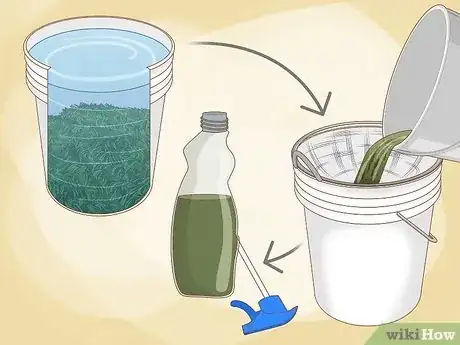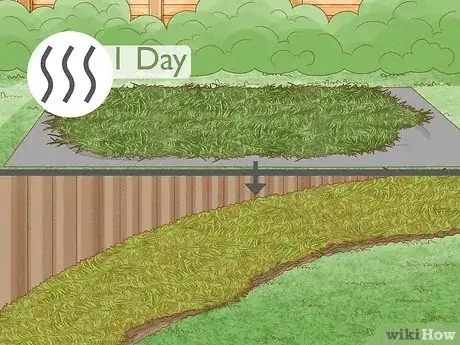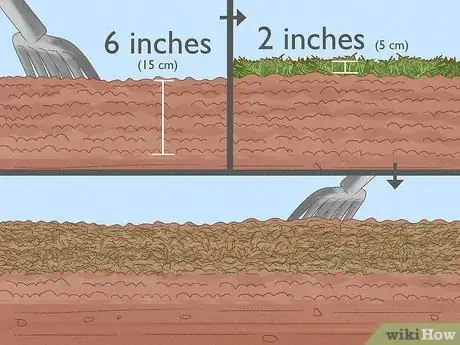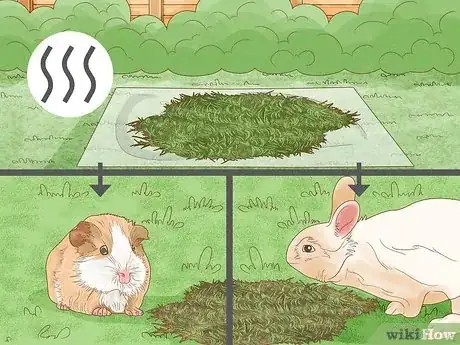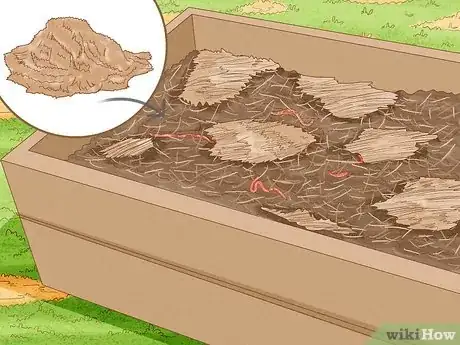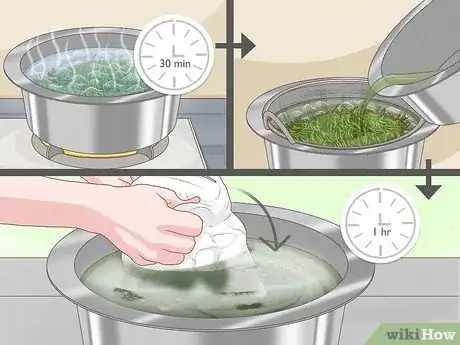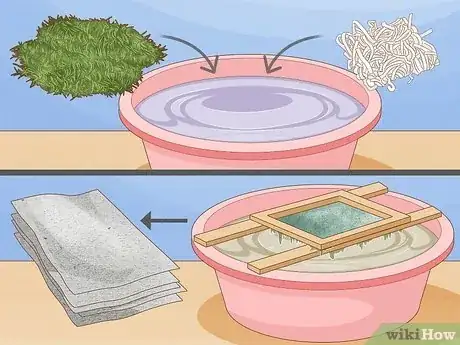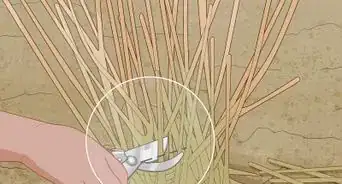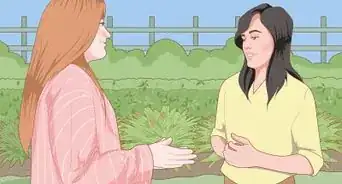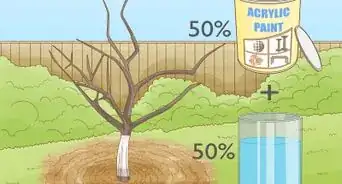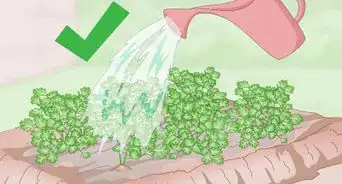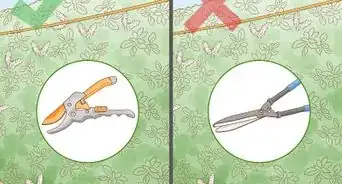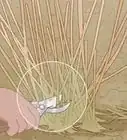This article was co-authored by Grant Wallace and by wikiHow staff writer, Devin McSween. Grant Wallace is a Landscaper and Owner of Grantlanta Lawn in Atlanta, Georgia. With over seven years of experience, he specializes in lawn maintenance and landscape installation. In 2012, he earned his BA from the University of West Georgia. Grant has been profiled in Shoutout Atlanta, Canvas Rebel, and Voyage ATL.
There are 20 references cited in this article, which can be found at the bottom of the page.
After you finish mowing your lawn, it can be hard to know what to do with the grass clippings that are left behind. There are actually plenty of easy, beneficial, and fun ways you can use your clippings. In fact, the best thing you can do with your clippings is simply to leave them in your yard! We’ve provided you with 12 great ideas on how to use your grass clippings that span from fertilizing your lawn to creative pursuits like making your own paper.
Things You Should Know
- Keep your clippings in your yard to fertilize your lawn.
- Use clippings as mulch or add them to your compost, soil, or garden.
- Take unwanted clippings to your recycling center or donate to friends, neighbors, farms, or plant nurseries.
- Get creative and make clothing dye or paper with your leftover clippings.
Steps
Warnings
- Do not use or donate your grass clippings if they have been treated with herbicides, pesticides, or any other chemicals.[32]⧼thumbs_response⧽
- Don’t burn your grass clippings. Burning clippings releases a lot of smoke and carbon that is harmful to you and the environment. Depending on where you live, it may even be illegal for you to burn grass clippings.[33]⧼thumbs_response⧽
- Check your state’s rules on putting your grass clippings in the garbage. Along with being wasteful, throwing away your clippings is banned in several states.[34]⧼thumbs_response⧽
Expert Interview
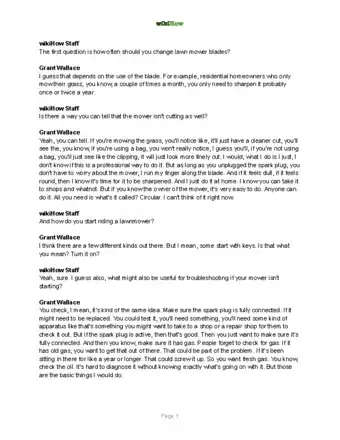
Thanks for reading our article! If you'd like to learn more about grass clippings, check out our in-depth interview with Grant Wallace.
References
- ↑ https://extension.missouri.edu/publications/g6958
- ↑ https://extension.oregonstate.edu/news/it-best-cut-grass-often-leave-clippings-lawn
- ↑ https://portal.ct.gov/DEEP/Waste-Management-and-Disposal/Organics-Recycling/Do-Not-Trash-Grass
- ↑ https://portal.ct.gov/DEEP/Waste-Management-and-Disposal/Organics-Recycling/Do-Not-Trash-Grass
- ↑ https://www.johnson.k-state.edu/docs/lawn-and-garden/air-quality/Recycling_Grass_Clippings.pdf
- ↑ https://www.ucitymo.org/705/Yard-Waste-and-Leaf-Collection
- ↑ https://www.ucitymo.org/705/Yard-Waste-and-Leaf-Collection
- ↑ https://www.westtexasgardening.org/post/fertilizer-tea
- ↑ https://insteading.com/blog/uses-for-grass-clippings/
- ↑ https://www.nj.gov/dep/dwq/pdf/rutgers_grass.pdf
- ↑ https://portal.ct.gov/DEEP/Waste-Management-and-Disposal/Organics-Recycling/Do-Not-Trash-Grass
- ↑ https://extension.colostate.edu/topic-areas/yard-garden/eliminate-grass-clipping-collection-7-007/
- ↑ https://www.nj.gov/dep/dwq/pdf/rutgers_grass.pdf
- ↑ https://portal.ct.gov/DEEP/Waste-Management-and-Disposal/Organics-Recycling/Do-Not-Trash-Grass
- ↑ https://portal.ct.gov/DEEP/Waste-Management-and-Disposal/Organics-Recycling/Do-Not-Trash-Grass
- ↑ https://peppershomeandgarden.com/mixing-grass-clippings-into-soil/
- ↑ https://hgic.clemson.edu/lasagna-gardening/
- ↑ https://hgic.clemson.edu/lasagna-gardening/
- ↑ https://news.okstate.edu/articles/agriculture/2021/stotts_horse-hay.html
- ↑ https://insteading.com/blog/uses-for-grass-clippings/
- ↑ https://extension.okstate.edu/fact-sheets/the-basics-of-vermicomposting.html
- ↑ https://www.newlifeonahomestead.com/grass-clippings/
- ↑ https://honestlywtf.com/diy/diy-natural-sourgrass-dye/
- ↑ https://www.minerbook.co/blog/making-handmade-grass-paper
- ↑ https://portal.ct.gov/DEEP/Waste-Management-and-Disposal/Organics-Recycling/Do-Not-Trash-Grass
- ↑ https://portal.ct.gov/DEEP/Waste-Management-and-Disposal/Organics-Recycling/Do-Not-Trash-Grass
- ↑ https://www.nj.gov/dep/dwq/pdf/rutgers_grass.pdf
- ↑ https://www.nj.gov/dep/dwq/pdf/rutgers_grass.pdf
- ↑ https://portal.ct.gov/DEEP/Waste-Management-and-Disposal/Organics-Recycling/Do-Not-Trash-Grass
- ↑ https://portal.ct.gov/DEEP/Waste-Management-and-Disposal/Organics-Recycling/Do-Not-Trash-Grass
- ↑ https://portal.ct.gov/DEEP/Waste-Management-and-Disposal/Organics-Recycling/Do-Not-Trash-Grass
- ↑ https://turf.purdue.edu/grass-clippings-and-herbicides/
- ↑ https://news.delaware.gov/2022/05/02/dnrec-urges-clean-alternatives-to-burning-yard-waste/
- ↑ https://www.compostingcouncil.org/page/organicsbans


